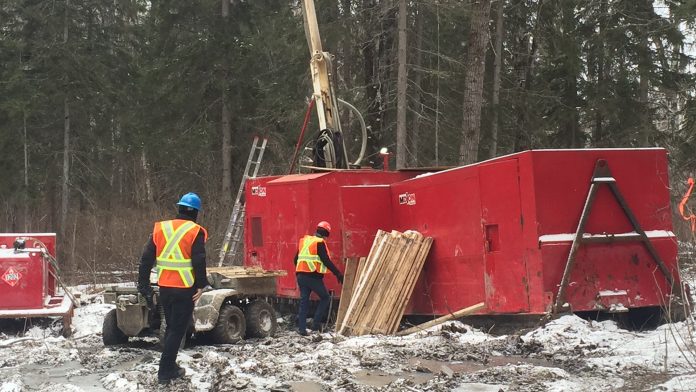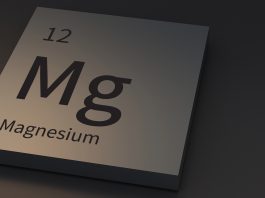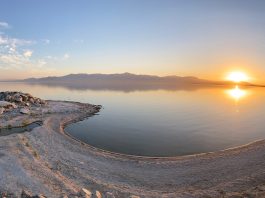The Galloway gold project, in Québec, Canada, is set to be a mother lode for the Fokus Mining Corporation, showing promise for high rates of gold and precious metal discovery and potential extraction in the future.
In the summer of 2020, Fieldex Exploration Inc, a mining exploration company that has been in operation since 1985, announced a name change and new directions to make the company more efficient, profitable, and focused on what it does best. The new name reflected this renewal: Fokus Mining Corporation.
The company also signed a Mineral Option Agreement with a view to acquire 100% interest in the Galloway Property (press release August 07, 2020), completing the acquisition in late May of 2021 (press release June 01, 2021). Fokus then acquired any remaining interests and several royalties tied to the project that could have caused issues with potential future development.
As Fokus decided to concentrate on the Galloway Gold Project, the company had a portfolio of other mining claims in Québec. The two best base metal projects were optioned and sold to Mosaic Minerals for Mosaic common shares. Subsequently, Mosaic acquired numerous projects in a favourable geological environment for the discovery of lithium properties in the James Bay territory of Québec, where several favourable lithium-bearing pegmatites have been identified.
Jean Rainville, President and CEO, stated: “Our company works very hard on its large Galloway gold property in Abitibi but strongly believe also in the potential of strategic minerals and we wanted to be involved in their search. When we exchanged our properties with Mosaic Minerals for an interest in the company, we were convinced of their effectiveness. Seeing their recent large acquisition in the current challenging lithium claims environment reinforces our belief that Mosaic has positioned itself very well and we are delighted with this important addition to the portfolio.” February 22, 2023
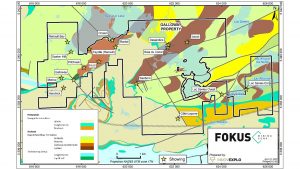
Focusing on Galloway
The Galloway Project – GP, is strategically located near several gold deposits that have been discovered along one of the most prolific gold faults, the Cadillac-Larder Lake Fault, a crustal-scale structure defining the southern boundary of the Abitibi sub-province. This fault hosts the Kirkland Lake, Noranda, Cadillac, Malartic, and Val-d’Or mining camps. More than 100 million ounces of gold have been extracted from these mining camps to date, and discoveries are still being made on the belt, including a large-scale underground mining operation called Odyssey, adjacent to the Canadian Malartic mine, which was formerly Canada’s largest gold producer.
The Galloway gold exploration project is located approximately 30km west of the city of Rouyn-Noranda (population 40,000), along the paved Trans-Canada Highway. A railway and a hydroelectric line also run along the same route. The region boasts a workforce skilled and experienced in mineral exploration and mining, as the town of Rouyn is home to several mining and service companies, as well as a commercial airport.
Galloway covers a total area of 668 hectares, with 10x3km along the fault.
The first gold discovery in western Québec was made on this property (LAC Fortune, 1906), which is also adjacent to the historic Arntfield and Francoeur mines (1923).
The Wasamac property borders Galloway to the east, north-east and south-west, and is now owned by Agnico Eagle, which acquired the Canadian assets of Yamana Gold. Yamana’s last reserve estimate was 1,900,000 ounces of gold in the proven and probable category, and the company was considering an underground operation. Another private company, Gold Candle Limited, is re-evaluating the former Kerr Addison gold producer, located some 15km west of Galloway, across the border from Ontario, which produced more than 12 million ounces of gold.
The Galloway property is in the Abitibi Greenstone Belt, a sub-province of the Superior Province, and just north of the Cadillac-Larder Lake Fault. The property is underlain by mafic volcanic rocks of the Archean Blake River Group and volcano-sedimentary rocks of the Late Archean Timiskaming Group, both intruded by a swarm of Archean syenitic dykes and Proterozoic sedimentary rocks of the Cobalt Group.
The geology of the northern part of the project area is characterised by Archean volcanic rocks and mafic sills of the Blake River Group. The area south of Lake Dasserat is characterised by alkaline volcano-sedimentary rocks forming a small basin bounded by faults and intruded by a syenitic porphyry complex.
The Galloway property is mainly prospective for gold, copper and molybdenum mineralisation associated with a magmatic hydrothermal system developed in the Renault Bay syenite complex. The property may potentially host precious and base metal mineralisation associated with volcanic rocks of the Blake River Group. The main zone of gold mineralisation currently identified lies in the western part of the property.
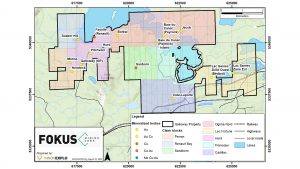
Working on Galloway
As exploration had been carried out in different parts of Galloway since the early 20th century, valuable data was readily available when Fokus took over the project, with numerous gold showings having been discovered. The government had also flown over the area to provide detailed topography of the region, a very useful tool for identifying structural features that are essential for determining areas where mineral-rich fluids could be transported to the surface. Of particular interest are the results of the following studies:
- the 17 historical drill holes (12,820m);
- the channel sampling programmes (2011); and
- the last drilling campaign completed between 2009-2012 by the predecessor company, 52 holes (12,820m) of diamond drilling showed the potential for a large syenitic complex on the western part of the property. This limited programme nevertheless clearly identified three gold-bearing mineralised zones: Moriss, Hendrick and GP. These three zones, which are very close together, form what is known as the project’s Golden Triangle.
The Hendrick showing was discovered in the 1980s and is located 500m south of the Moriss and GP zones. The Hendrick Zone is genetically related to the Renault Bay syenite and lies within or close to what appears to be an apophysis of the intrusion. It is, therefore, related to the GP and Moriss Zones due to its strong similarities in the nature of the gold mineralisation, its distribution and geochemistry, as well as its spatial relationship. Hendrick is mainly covered by a thick layer of so-called Cobalt Sediments. It has been identified over a strike length of 700m and is still open.
The GP gold deposit lies along the contact between the Renault Bay syenitic complex and the alkalic-volcanic-sedimentary rocks in fault contact with the Blake River rocks to the north. It consists of omnipresent gold mineralisation with an envelope 230m long by more than 100m wide. The deposit is open at depth, and preliminary mineralogical, chemical, and metallurgical tests were carried out in 2012. These were followed by the first mineral resource estimate prepared on the project by SRK Consulting. SRK examined the project, focusing on the open pit portion, and estimated an indicated resource of 240,000 ounces of gold and an inferred resource of 32,000 ounces.
The Moriss showing, discovered via geophysics in 2019, is located approximately 500m west of the GP zone. It is the only one of the three zones with high gold grades. It is in a breccia at the southern contact of a diorite and a basalt.
Exploration at Galloway
In March 2023, after Fokus conducted a 40,000m drilling campaign over a two-year period, an initial resource estimate for the GP, Moriss, and Hendrick zones was made. An inferred resource of 1,419,000 ounces of gold was estimated at a gold price of $1,750 per ounce (1,788,100 ounces at $1,960), with gold recovery estimated at around 90%. This estimate assumes the use of 100% underground mining techniques, as there has not yet been a review of the GP zone with an open pit mining plan.
It is important to note that independent metallurgical tests have been carried out to estimate recovery, and as the gold is very fine, the results are fairly reliable. It should also be noted that the mineralisation does not present any particularly significant problems, as the sulphur content is low, and there are no significant deleterious elements in the mineralised zones assessed.
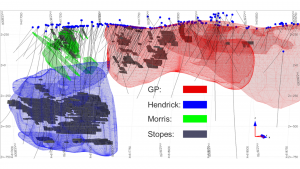
Also, in the western part of the Galloway project, a broad gold corridor containing significant gold values exists over several kilometres, from the Hendrick Zone to the Hurd Zone. Within this area, a new gold-bearing zone has been discovered just to the east of the GP zone; results from the first 19 holes of this RB zone have been published, indicating the presence of a significant quantity of gold close to the surface.
In fact, in September 2023, Fokus was pleased to announce that assay results from its fourth exploration drilling campaign of seven new holes, which took place during the summer of 2023, and which was aimed at furthering its knowledge of the RB Zone where it had already drilled twelve holes, showed that these seven holes, for 1,735m, all had intersected gold. Another gold zone was identified some 700m east of the GP Zone with hole number GA-21-59 in April 2022.
A high-definition helicopter-borne magnetic survey was completed by Fokus over the entire property and indicated several new exploration targets, including buried intrusions to the east of the Hendrick Zone and the GP Zone, leading to the discovery of the RB Zone.
Next, a litho-geochemical study was carried out across the entire property by Innovexplo, with a particular focus on the main gold showings and polymetallic showings (Cu-Au-Mo) located in the Baie Renault complex.
Also, ALS GoldSpot was commissioned to conduct a regular geological modeling, a 2D and 3D supervised Machine Learning exercise, and a conventional targeting exercise to increase the new prospective zones for gold mineralisation and to define drill targets
Finally, at the end of November 2023, Fokus resumed its drilling programme on the Moriss zone with a minimum target of 1,500m. (Press release of November 29, 2023: FOKUS MINING BEGINS ITS WINTER DRILLING PROGRAMME ON THE GALLOWAY PROJECT)
A vision for the near future
In retrospect, this is just the start of a major undertaking for Fokus on the Galloway project, as the company will prioritise, in 2024, infill drilling and testing of the strike extensions of the known mineralised zones, and will continue to drill the newly discovered RB mineralised zone in the near term in an attempt to expand and better qualify the gold resource on the western part of the project.
“(…) Our last year drilling campaigns allowed us the identification by drilling of the RB Zone, but also to test one of the large magnetic anomalies with hole GA-21-59 (…) and to demonstrate that it is also mineralised with gold. Many other potential targets will also need to be evaluated during future exploration programmes.” Press release December 1, 2022
With so many targets across the property, a strategically unrivalled location, and with the independent study prepared by ALS Goldspot Discoveries, the dedicated and experienced Fokus team is well placed and more motivated than ever to seize this opportunity to unlock Galloway’s golden secret.
Fokus shares trade on the TSXV (FKM), the OTC markets (FKMCF) and in Frankfurt (F7E1).
Please note, this article will also appear in the seventeenth edition of our quarterly publication.

